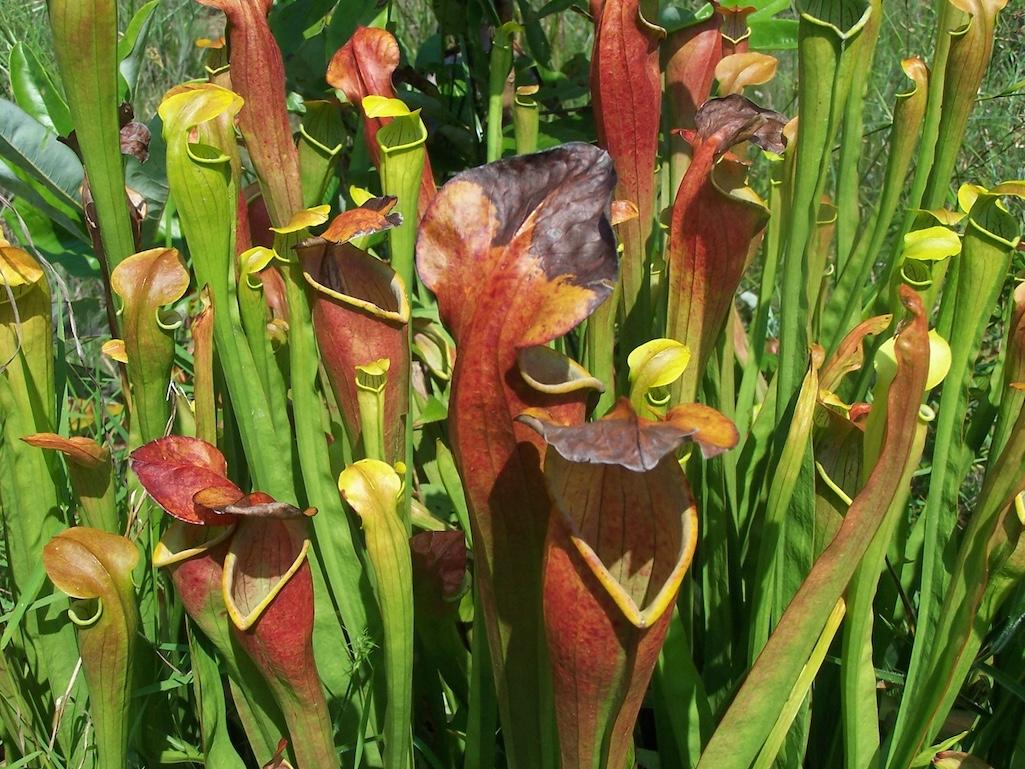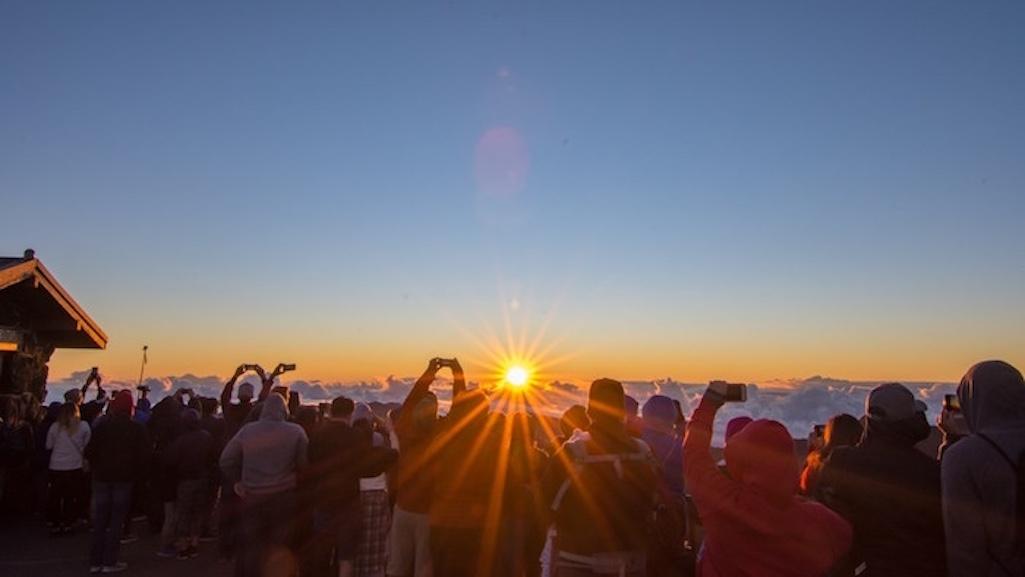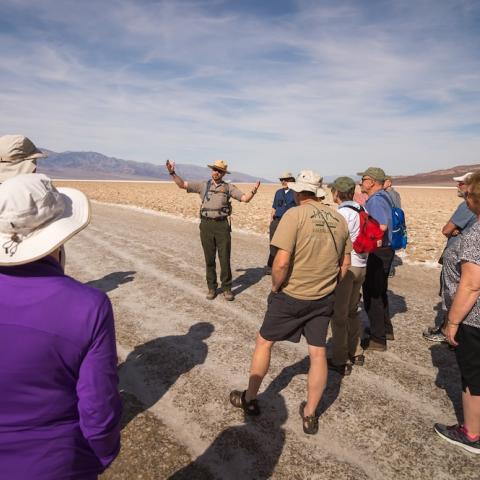It's mid-February, the Super Bowl is behind us, Spring Training is just beginning (but meaningful ball games are six weeks away), and many national parks are still under snow. But if you need to get away to a park, we have some candidates for you.
Just be sure to check your desired destination's website to make sure something hasn't popped up that might impact your planned visit.

Carnivorous pitcher plant at Big Thicket National Preserve/NPS file
Big Thicket National Preserve, Texas
Carniverous plants? When was the last time you saw those in a national park? You can find them in Big Thicket.
For trivia fans, know that Big Thicket shares a birthday with Big Cypress National Preserve in Florida. Both were designated on October 11, 1974, and so both will celebrate their 50th anniversaries this year. Trivia bonus: They were the first national preserves in the National Park System.
As contributor Barbara 'Bo" Jensen noted in 2021, the National Park Service describes Big Thicket National Preserve as “a biological crossroads.” This patchwork of 15 protected areas covering 113,114 acres safeguards habitat for more than 1,300 plant species, 60 mammal species, 86 different species of reptiles and amphibians, 97 fish species, and over 300 species of birds. By 1981, it was designated a UNESCO Biosphere Reserve.
If you're not interested in carniverous plants ("Feed me Seymour, feed me!"), see how many flowering plants you can find in the preserve, cast a line, tote your binoculars in search of birds, or paddle your boat.

Dip your paddle in Lake Manly at Death Valley National Park/NPS file
Death Valley National Park, California/Nevada
Kayaking Lake Manly. What more reason do you need to visit Death Valley now? Of course, if you don't paddle, you could plan a visit with expectations for a possible "super bloom" of wildflowers, though park rangers aren't ready just yet to make that prediction. Still, the wildflowers that do bloom will be pretty spectacular.
This time of year the weather at Death Valley is mild and the hiking incredible. And there are some pretty interesting destinations within the park to visit:
- Harmony Borax mine works.
- The Keane Wonder Mill and Mine site (if the access road has reopened), which was one of the best examples of historical gold mining in the park.
- Peer into an extinct volcano, or walk to its floor.
- Drive out (with a suitable rig) to the Racetrack to see if any rocks have moved about.
- Head out across the Mesquite Flat Sand Dunes.
- Or simply pitch your tent or park your RV and enjoy the spring weather. After a long, snowy winter, that could be just the ticket you need.
Unfortunately, Scotty's Castle still has not recovered from damage inflicted by a torrential storm in October 2015.

Peering into a cypress dome, Everglades National Park / National Park Service file
Everglades National Park, Florida
It's just about the perfect time of year to visit the Everglades. Not too hot, not too stormy or steamy, the wet season is still a couple months off. Join a ranger to explore a cypress dome on a slough slog. (Reservations are required at this time of year.) To sign up or for additional information, visit the Ernest F. Coe Visitor Center or call 305-242-7700.
Don't want to get your feet wet? Visit the Anhinga Trail, preferrably right around sunrise or sunset, and see what wildlife you can spot or hear. Visit Flamingo to go on a boat tour, or book a room or glamping tent and spend the day fishing. If you're adventurous and experienced, check out one of the park's water trails.
There's even a relic from the Cold War that you can visit.

Gulf Islands National Seashore/NPS file
Gulf Islands National Seashore, Florida/Mississippi
Swimming, snorkeling, scuba, biking, birding, photography, historic sites, fishing, boating, camping, hiking, rinse and repeat.
In the seashore's Florida District, you'll find one of the most complete collections of publicly accessible structures relating to the evolution of seacoast defense in the United States, according to the National Park Service. "It represents a continuum of development from Spanish exploration and colonization through World War II. The forts of Gulf Islands National Seashore span almost 150 years, from the Spanish colonial Bateria De San Antonio (1797) to the World War Two-era Battery 234. This reflects the historic value of the anchorages at Pensacola Bay, Florida."
"In the Mississippi District in addition to Ship and Cat Islands, there are two wilderness islands, Horn and Petit Bois, which are accessible by private boat or by NPS licensed boat captains," the agency addes. "Although the islands are located from 6 to 12 miles offshore, some visitors even kayak from the mainland. However, if long-distance boating is not an option, visitors may enjoy camping in the 51-site first-come, first-served Davis Bayou Campground nestled in the woods near the Davis Bayou in Ocean Springs."
Just be sure to plan your visit before, or after, spring break when crowds descend here.

Watch the sun rise from the top of Haleakalā National Park/NPS file
Hawai'i Volcanoes National Park or Haleakalā National Park, Hawaii
Haleakalā doesn't get quite as much attention as Hawai'i Volcanoes, which makes it a good option if you're searching for a little solitude. The main attraction here is watching the sunrise from the summit of the park. Just know that if that's your desire, you need to book a reservation, which can be had 60 days out from your trek to the roof of the park. Been there, done that? Head to the Kīpahulu District for some hiking, ranger-led treks, camping, to check out the Pools of ʻOheʻo, hike through a bamboo forest, or to enjoy some of the park's powerful waterfalls.
Hawai'i Volcanoes is a much-in-demand destination...particularly when Kīlaeua is erupting. When this article was written, the volcano was not erupting. But that's no reason to turn your back on Hawai'i Volcanoes. This is such an ecologically diverse park, one that also boasts rich cultural resources, that a visit is rewarding regardless of Kīleaua's temper. You can drive the Chain of Craters Road and explore both past lava flows as well as petroglyphs and a sea arch. Or you could hike across the floor of an old volcanic window, look and listen for birds during a short hike at Kīpukapuaulu, or explore the backcountry on a multi-day hike that could lead you to the summit of Mauna Loa, if it's open.
To learn more Hawai'i Volcanoes and its wonders, catch this coming weekend's podcast when we have a conversation with one of the park's rangers.

Pitch your tent under the stars at Joshua Tree National Park/NPS file
Joshua Tree National Park, California
Both proficient and aspiring climbers head to this desert jewel at this time of year, so it might not be the best destination if you're hoping to avoid crowds. But if you like to boulder or need some work on your other climbing skills, Joshua Tree is a great destination, particularly now before the hot weather really sets in.
"This high desert monzogranite climbing mecca is famous for its traditional-style crack, slab, and steep face climbing. Joshua Tree offers challenges for all ability levels with more than 8,000 climbing routes, 2,000 boulder problems, and hundreds of natural gaps to choose from," notes the National Park Service on the park's website. "It is truly a world-class climbing destination."
Of course, you don't have to be into climbing to visit Joshua Tree. There are miles and miles of trails to explore, both in the front country (check out the Cholla Cactus Garden) and the backcountry, and birding can be superb.
As a bonus, there are two different desert ecosystems you can explore: The northern half of the park is laid down across a portion of the Mojave Desert, while the southern half covers part of the Colorado Desert, which itself is a component of the larger Sonoran Desert. A rough dividing line between the Mojave and Colorado deserts in the park is Wilson Canyon, through which the Pinto Basin Road runs. The Mojave is a higher, cooler desert than the Colorado Desert and more attractive to Joshua trees, Mojave yuccas, even pinyon pines, scrub oaks, and junipers. The Colorado Desert lies below 3,000 feet in elevation and is hotter than the Mojave. This setting is more favorable for cholla, ocotillo, and creosote bush.

You never know what you'll encounter at Organ Pipe Cactus National Monument (that's a bobcat in the saguaro)/NPS file
Organ Pipe Cactus National Monument, Arizona
Great front-country camping, wonderful birding, and easy day hikes make Organ Pipe a great winter destination. While there once were concerns about undocumented immigrants crossing the park, those are largely in the past.
The Twin Peaks Campground has 208 sites, can accommodate RVs up to 40 feet in length, and reserves some sites for tent camping only. It's a clean, comfortable campground, with water spigots every few campsites. There are solar showers in the restrooms, but be cautious, as the water can get searing on hot days.
You can cruise around the park to take in all the unique vegetation, head down a trail to count ocotillo stalks, barrel cactus, and saguaros. Though you're in a desert, it's an ecologically robust one. The park counts more than 600 plant species (31 cacti species!) and more than 50 mammalian species. There are nearly 300 bird species, and 50 types of amphibian and reptilian species. Taken as a whole, it’s understandable why the park in 1976 was designated an International Biosphere Reserve.

You never know what sort of saguaro trees you'll see in Saguaro National Park/NPS file
Saguaro National Park, Arizona
This is the season to visit Saguaro, and not simply because of the wonderful weather. Climate change and invasive species are having impacts on the park, and while saguaros are not going to vanish overnight, hotter weather is not what they need. Saguaros store water within their trunks and branches, and hotter weather can lead to evaporation of that water, which can lead to a wilting cacti. Scientists have been working to understand the long-range impacts to saguaros. For now, though, there are thousands for you to see on a trip to this national park.
To get a quick primer on the vegetation of the Sonoran Desert, take a walk through the park's Ethnoboany Garden. This garden showcases plants that long have been used by local cultures for foods and other uses. As the sign to the trail states, "Imagine living in the Sonoran Desert. What would you eat? What could you use for shelter? What would you do if you became ill?"
Spend 15-30 minutes strolling through the garden before you enter the Rincon Mountain Visitor Center and you'll see a variety of cacti, from saguaro to cholla, mesquite, soaptree, and mormon tea. Placards not only identify these plants for you, but detail what they can be used for.
There are roughly 165 miles of marked trails in Saguaro, and the Cactus Forest in the Rincon District is threaded with roughly one-quarter of that total with a spider-web of trails that ramble through the Sonoran Desert. There's even a short, 2.5-mile stretch open to mountain bikers, though that's too short to truly appreciate what the area offers if you're traveling by bike. There's also some great hiking here, from the Freeman Homestead Nature Trail to the Douglas Spring Trail.
And while you're hiking, watch out for gila monsters and roadrunners.

The time is right to soak up the sun at Virgin Islands National Park/Kurt Repanshek file
Virgin Islands National Park, U.S. Virgin Islands
Now is the time to check out Virgin Islands National Park before hurricane season arrives (June 1). It's a Caribbean paradise, with white sand beaches, fairly good snorkeling and scuba (was great before last year's coral bleaching event), boating, swimming, and hiking. If that's not enough, there's rich cultural and archaeological history both easily found and hidden in the park.
While the Reef Bay Trail is one of the more popular paths in the park, a shorter trail that pays off with some great views of Trunk Bay and out into the Caribbean is the roughly 10-minute walk up Peace Hill. Found just short of 3 miles from Cruz Bay, the trail leads to the top of a bluff where there's an old sugar mill tower. There used to be a larger-than-life statue of "Christ of the Caribbean" across from the tower ruins, but Hurricane Marilyn destroyed it in 1995.
Enjoy island time during your visit. Rise early or late, depending on your mood. Check out the restaurants that showcase island fare. Plop down in a beach chair under and umbrella with a good book or magazine, and simply watch time tick by.
There you have it, a short but rich potpourri of parks to add to your to-do list.




 Support Essential Coverage of Essential Places
Support Essential Coverage of Essential Places







Comments
I've not been to those AZ parks (Sagauro and Organ Pipe). Ms. Bain's post was thorough introduction as well..
Are you sure the dangers near the border have not been understated?
While Organ Pipe borders Mexico, that area is back country wilderness. Very few visitors go there. The majority of Organ Pipe is several miles from the border and is almost never used for drug trafficking. Almost all of that comes through Border Patrol checkpoints such as San Diego and El Paso.
Saguaro is more than 100 miles north of the Mexican border, a drive of two hours. It is within Tucson's urban area so does not offer advantages for entry. Again, most asylum seekers' entry is through checkpoints on the border itself.
Almost all entering to seek asylum try to turn themselves in to authorities as soon as possible. Visitors to the area rarely encounter anyone.
Well, if true, why has Organ Pipe Cactus NP closed several roads in the southern part of the park for "public safety"? Closed to cars and pedestrians!
https://www.nps.gov/orpi/index.htm
The majority of Organ Pipe is several miles from the border and is almost never used for drug trafficking
The family of Ranger Eggle--after whom the visitor center is named-- may disagree with your assessment, even after 20 years.
https://www.nps.gov/orpi/learn/historyculture/kris.htm